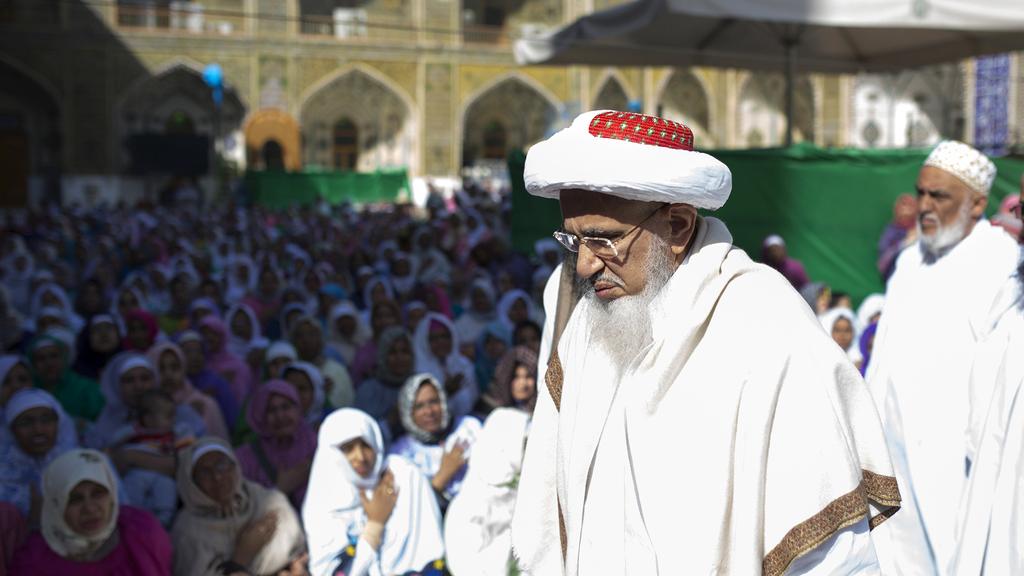
The Religious Rituals of the Dawoodi Bohras

Year-round expression of popular piety is the hallmark of the Bohra sect. One need only examine their calendar to find it marked with important days of birth and death anniversaries of the Prophet, his family, and other saints and holy persons.
The Month of Ramadan
However, three months in the Islamic calendar see a heightening of popular religiosity and religious rituals of Dawoodi Bohras as well as those of other sects can be seen among the Shia communities. These are Ramadan, Rajab, and Moharram. During Ramadan, the obligatory fasting (rowzeh), individual prayer at home or congregational prayer at the mosque or at temporarily erected enclosures in residential compounds, and special long prayers on important nights are the prime religious features of Ramadan. The women of the family spend time preparing a mini-feast for breaking the fast. All other religious activities dedicated to different Islamic figures and regional pilgrimages come to a standstill during this month.
The Month of Rajab
Rajab, popularly referred to as the month of Ali (Ali no mahino), is characterized by special religious rituals of Dawoodi Bohras as well which inclues meetings of women’s neighborhood groups devoted to Ali in mosques, halls, or homes to call out his name. Men do not gather to call out the name of Ali. Sweets are distributed at these meetings for blessing, and the end-of-the-month neighborhood circles hold a ritual meal in which both men and women participate. To accumulate religious merit (savab), some men, but more women, fast during this month.
The Month of Moharram
Unlike Ramadan and Rajab, the month of Moharram mobilizes and energizes the entire community—men and women, rich and poor, young and old—on a scale unmatched at any other time of the year. Devotional allegiance to the Prophet and his family is seen most clearly and forcefully in the rituals commemorating the martyrdom of Hosayn at the Battle of Karbala. The origins of these practices can be traced to the da’is (leaders of the missionary effort) who came to India in the eleventh century from Yemen and Egypt to spread the Isma’ili faith. The Bohras were variously persecuted under the Sultanate of Delhi, later the Sultanate of Gujarat, and thereafter by some Mughal emperors. During these times, many religious rituals of Dawoodi Bohras were suppressed. Under the Mughal emperor Aurengzeb’s rule (1658–1707), for example, religious practices and rituals, including pilgrimages to various shrines and mourning ceremonies for the martyrdom of Imam Hosayn, were banned. With Aurengzeb’s death, the Bohras were again generally permitted to practice their faith freely and the lamentation assemblies held during the early days of Moharram were revived in the eighteenth century under the thirty-eighth da’i—Isma’il Badr al-Din. This commemoration finds articulation today in numerous ways which will be discussed in the next article.
Taken from: Women of Karbala by Kamran Scot Aghaie